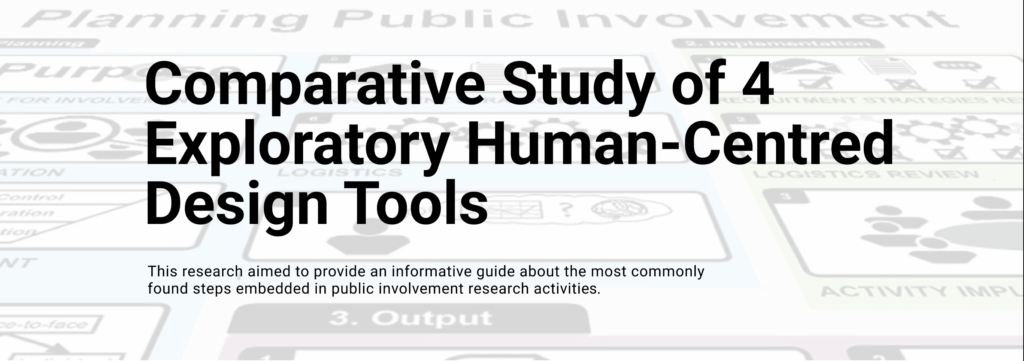
Client
None
Sector
Education
Research
Role
Lead Researcher
Duration
2013 to 2018
Overview
This research aimed to explore Human-Centred Design (HCD) as both an underlying philosophy and a pragmatic set of methodologies. It seeked to gain a better understanding of the challenges related to the application of customer involvement activities and the typical methods used in investigating issues and opportunities for designing healthcare settings.
Methodology
Human-Centered Design (HCD) was proposed as the methodological philosophy for this project because it facilitates the formulation of foundational and evaluative research phases and guides the design and implementation of various participatory activities.
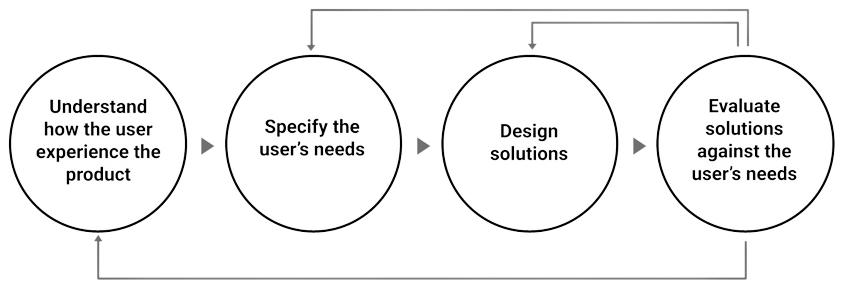
Fundational Research
Stakeholder model & Semi-structured Interviews
I identified a stakeholder model and conducted 25 semi-structured interviews to identify a specific case for further focus in this research.

Outcome
The outcome of this foundational research suggested focusing on the communication and relationship between GPs and patients as a setting for deploying patient-driven tools.
Secondary Research
After considering the selected research idea and conducting a detailed study about several user involvement activities, four of these activities were chosen, designed, and implemented to address the project’s goals and objectives.

Outcome
After concluding these activities, a comparative analysis and a SWOT analysis were conducted to identify differences among them.

Design Stage
The design stage was divides in two phases:
In phase one, a document synthesizing the main findings of this research was created, followed by a co-design workshop activity aimed at reviewing and improving this initial document.

In phase two, two workshop activities were proposed. The first aimed to propose communication formats (such as wall posters) to describe the information from the initial activity. The second aimed to review, critique, and suggest improvements to these formats based on their situational adaptability and usefulness.
Results
The result of this research was the proposal of three different wall posters, each approaching the process of planning and implementing involvement activities differently. The designs of these posters aimed to provide users with a quick access to the information they need.
Poster 1 – The Public Involvement Game – encourages a gamified experience by presenting the public involvement process as a ‘snakes and ladders’ game.
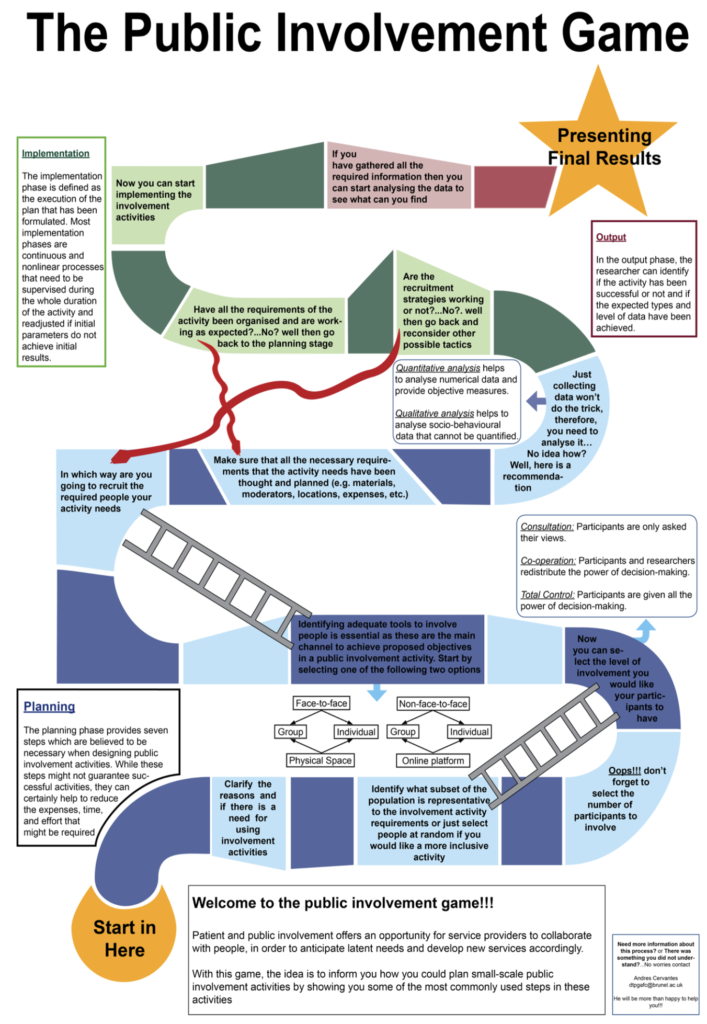
Poster 2 – Designing Small-Scale Public Involvement Activities – proposes a central framework containing the main phases of a public involvement activity, along with a brief explanation of each step and a ‘how-to’ description for each.
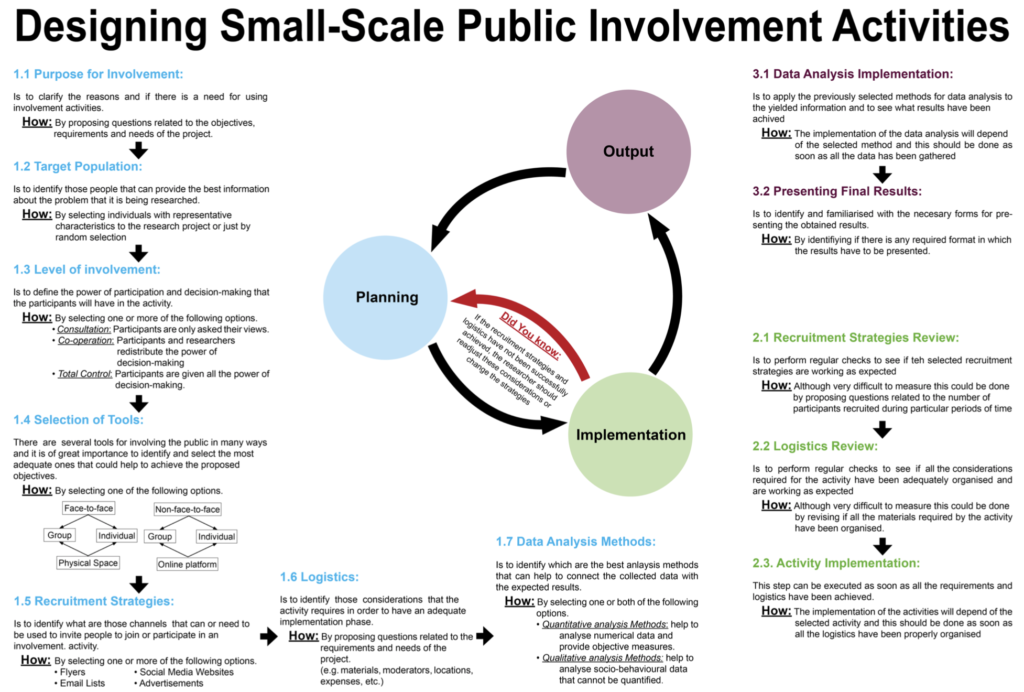
Poster 3 – Planning Public Involvement – offers a step-by-step manual layout with clear descriptions for each step, supporting images, and examples to help the reader better understand the process.”
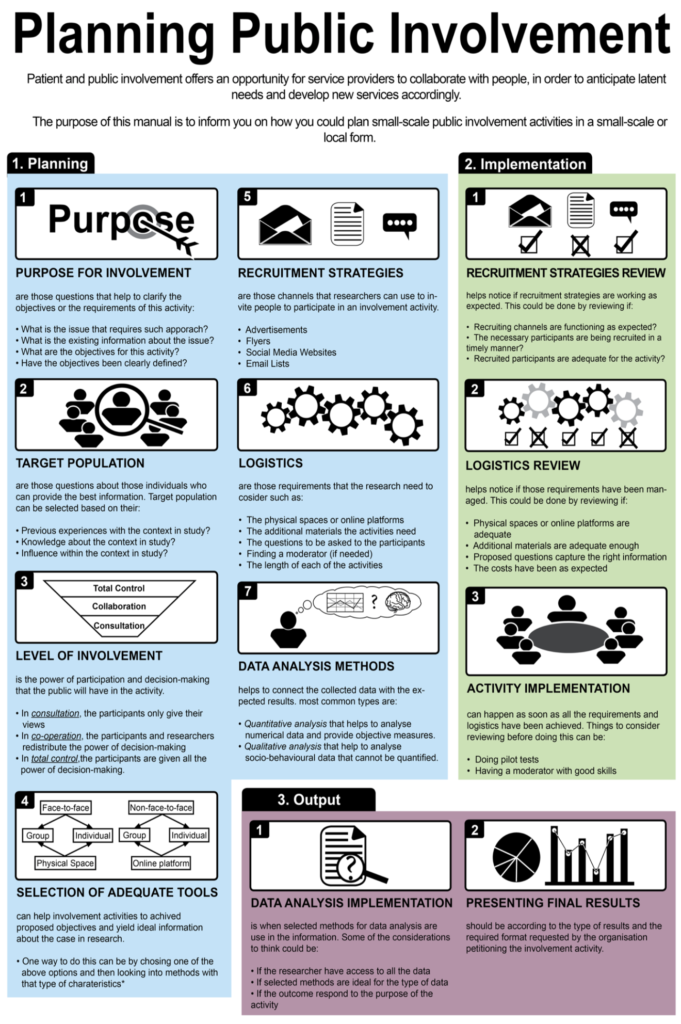
Conclusions
This research concluded that the most optimal way to assist health researchers in conducting public involvement research and better understanding the process of identifying and selecting ideal engagement tools could be by providing a best practice informative guide containing a simplified and comprehensive version of the most commonly found steps embedded in these design practices.
Some key takeaways from this research project include:
Collaboration yields the best designs. It was an enriching experience to witness how different people bring diverse ideas that can contribute positively to the design process.
Human-Centred Design can play a crucial role in detailed research processes. This philosophy and its tools can provide a clear and descriptive approach for those seeking to engage in public participation activities.
